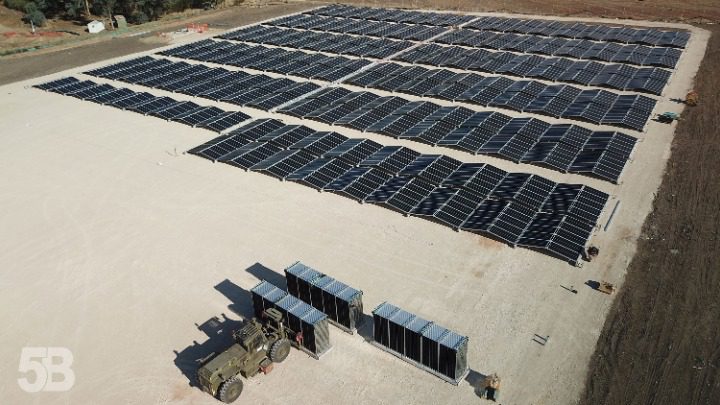Robots and Modular Designs Lead to Faster and Safer Solar Farm Construction and Maintenance

Earlier this month, AES Corp. unveiled Atlas, a first-of-its-kind solar installation robot. The cutting-edge, artificial intelligence-enabled technology behind Atlas is a major advancement for the industry, making it faster, more efficient, and safer to construct new solar facilities, the company said.
The innovative robot was designed by AES through a multi-year process and built in cooperation with Webster, New York-based Calvary Robotics and other third parties. In a press release announcing the launch of Atlas, Chris Shelton, senior vice president and Chief Product Officer for AES, suggested the pace of clean energy adoption needs to be increased and robots could be one of the tools needed to speed the process. [Atlas] automates the construction of new solar resources, enabling a safer work environment, shorter project timelines and lower overall energy costs," he said.
BloombergNEF has reported that 455 GW of new solar capacity must be installed annually through 2030 for the world to achieve net-zero carbon emissions by mid-century. Remarkably, that's more than three times the amount of solar installed in 2020. The U.S. solar industry employed about 230,000 workers that year, according to the 11th annual National Solar Jobs Census, which was published by The Solar Foundation, the Solar Energy Industries Association, and the Interstate Renewable Energy Council (IREC). Quickly ramping solar sector employment up by a factor of three could be difficult, which is why the Atlas robot is potentially so important. AES said, Atlas will complement our skilled workforce by keeping them safe and performing the heavy lifting, placing and attachment of solar modules while adding new high-tech jobs."
Meanwhile, AES has also been investing in other innovations to enhance solar system construction, operations, and maintenance. The company partnered with 5B, a solar energy solutions provider with headquarters in Sydney, Australia, and offices in Austin, Texas, and Chile, to help expand 5B's MAVERICK technology on a global scale.
MAVERICK is a ground-mount solar solution designed to be safer, more cost-effective, and faster to deploy compared to traditional single-axis solar trackers or comparable solar racking solutions for off-grid, commercial and industrial, and large-scale solar power generation. Each MAVERICK array consists of up to 90 solar panels, mounted on specially designed racks, and optimized for the 540-550W module class of the utility-scale solar industry." The modular system is pre-fabricated and shipped to sites ready for rapid deployment by a team of three people and one forklift. 5B has called MAVERICK a plug and play solar farm in a box." AES claims the solution allows solar systems to be installed three times faster and with up to two times more energy per area.
Furthermore, AES is not only using robots for solar panel installation, but also for automated cleaning of panels to ensure peak performance. Earlier this year, the company deployed Ecoppia's T4 robotic cleaning technology at a solar site in California. The T4 system is designed to work especially well on single-axis tracker systems. The completely autonomous robots operate nightly, cleaning large-scale solar arrays without the use of water, human operators, or electricity-the robots are solar-powered.
Ecoppia, a Tel Aviv, Israel-headquartered company, says the environmentally friendly robots keep solar modules clean and functioning at peak productivity while saving millions of gallons of water, providing a truly sustainable approach to the operation and maintenance of solar modules." The company reports its technology has been deployed on more than 2,850 MW of solar power capacity and has cleaned more than 4.78 billion panels.
-Aaron Larson is POWER's executive editor (@AaronL_Power, @POWERmagazine).
The post Robots and Modular Designs Lead to Faster and Safer Solar Farm Construction and Maintenance appeared first on POWER Magazine.